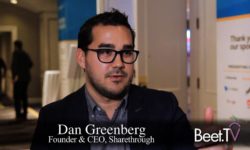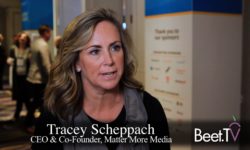SAN FRANCISCO — These days, TV companies have a lot of new data sources with which to better understand viewer behaviour and with which to help advertisers better reach the right audiences.
Could voice assistants like Alexa and Google Home be the next big technology to light up the data-collection opportunity?
In this video interview with Beet.TV, Comcast’s FreeWheel data platform GM Claudio Marcus discusses four categories of data-collection opportunity – and says the best approach is blending multiple of them to overcome individual weaknesses.
- Smart TV
- Set-top box
- Automated content recognition
- Voice assistant recognition
“Smart TV data makes it possible to understand OTT viewing of TV content that has already been fingerprinted,” Marcus says.
“We see some of these other data sets as complementary, but not really substitutes, and that’s because they bring different attributes to the table.
“Automated content recognition, primarily audio-based, (is) basically devices that listen for what’s in the background. (But) those devices are very dependent on the quality of the audio conditions.
“The newest entrants are some of the voice recognition applications for the home, like Google Home, for example, right? What we know is, because the X1 set-top box for Comcast has audio-based controls, we know that, in our Comcast subscriber homes, about 15% of all the commands are via voice. The rest are still via the traditional remote.
“If you’re relying 100% on voice-command data, you’re going to be missing out a lot of the viewing data. You may be able to pick up … what other types of programs people are so engaged with that they actually call them out by name. But, at the same time, you’re not capturing the full breadth of the viewing data.”
This video is part of a series produced in San Francisco at the RampUp 2018 conference. The series is sponsored by Alphonso. For more videos from the series, please visit this page.













































